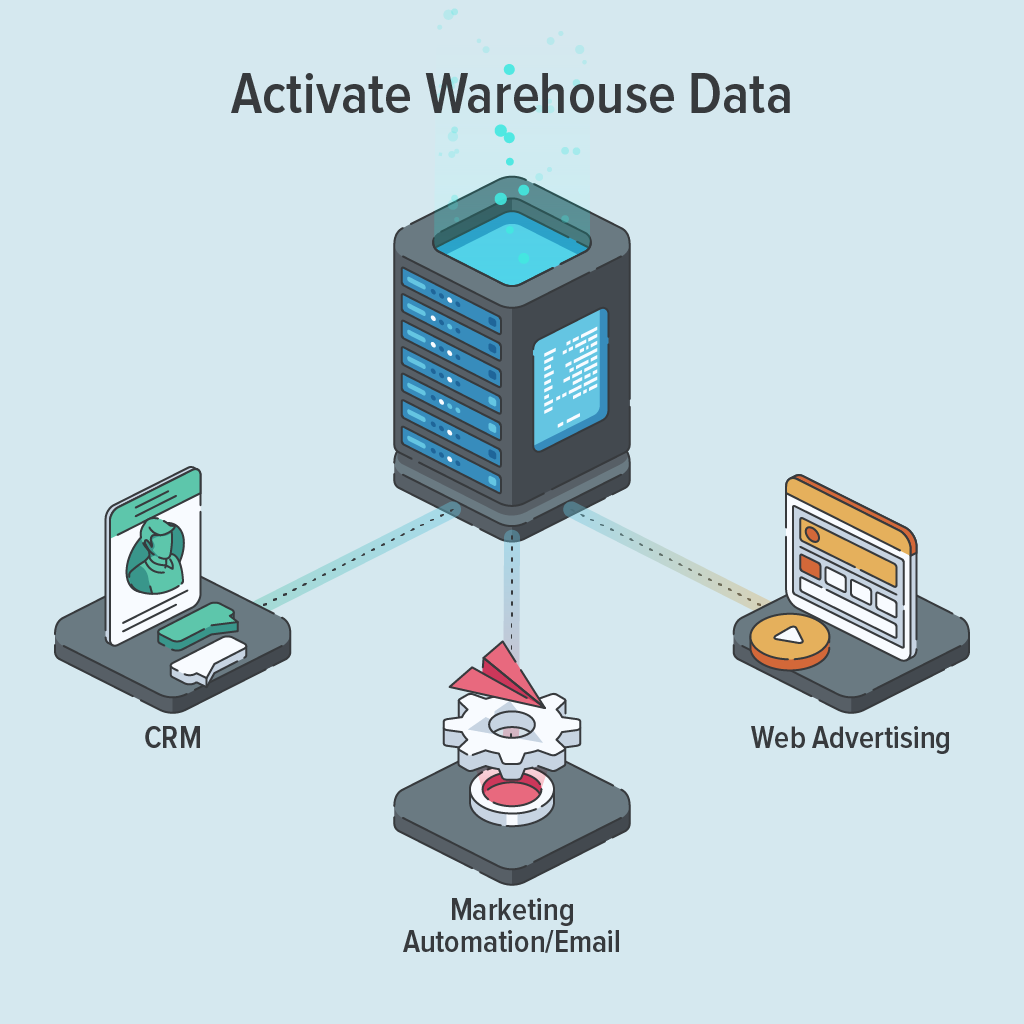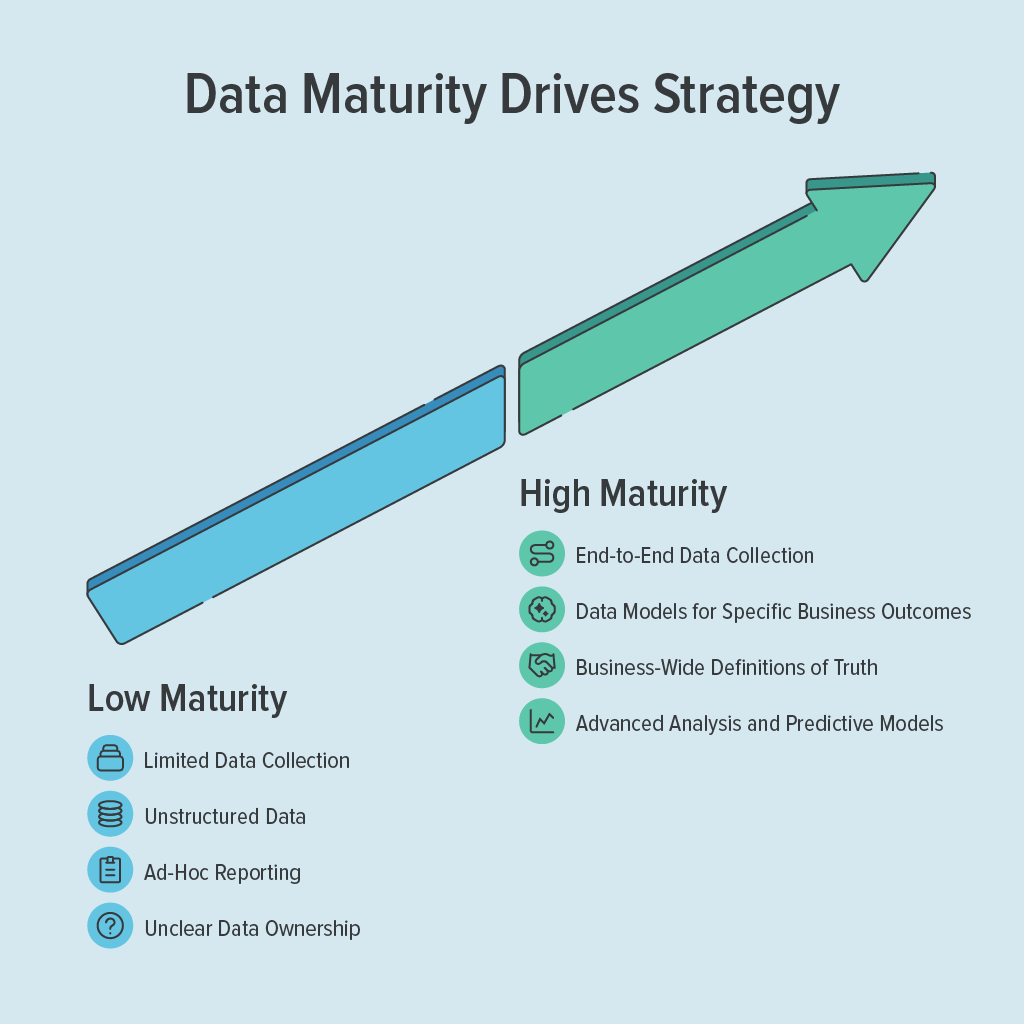
Your warehouse holds some of the most valuable customer data in your business. But for many companies, it only supports reporting. Sometimes it becomes a storage layer where important information sits unused.
If you invest six figures in a warehouse, it shouldn’t be a cost center. It should support revenue.
Right now, much of your best customer data is trapped in dashboards or summary tables. It never reaches the marketing, sales, and success tools that rely on it. This creates an activation gap: you have the data, but you can’t act on it.
The gap exists because of how data gets into the warehouse. Traditional ETL (Extract, Transform, Load) pulls data from tools like Salesforce, product systems, or marketing platforms and loads it into the warehouse. It’s essential for analytics, but it creates a one-way flow. Data goes in. Nothing comes out.
Reverse ETL changes that. It sends modeled, trusted data from your warehouse into the tools your team uses every day. It turns your warehouse into an operational system that supports segmentation, personalization, sales workflows, lifecycle marketing, and more.
What Can You Do With Reverse ETL?
Reverse ETL makes warehouse data useful in your revenue stack. Instead of custom pipelines for each tool, you sync clean, modeled data directly into your operational platforms.
A few common use cases include:
Audience building: Query the warehouse for precise groups—such as “customers who purchased A but not B”—and send those audiences to advertising or email tools.
Profile enrichment: Sync attributes like LTV, churn risk, product behavior, or support sentiment into your CRM or CDP so teams see a complete customer profile.
Identity control and privacy: Activating data from your own warehouse gives you control over customer identities. This matters in regulated industries, where you can sync audiences without exposing underlying reasons or sensitive attributes.

How Do You Choose the Right Reverse ETL Approach?
Choosing the right Reverse ETL setup depends on your data maturity—the quality of your warehouse data and your readiness to activate it.
If your data maturity is still developing:
You may still be establishing tracking, naming conventions, and core models. Reverse ETL enables activation, but it can’t compensate for poor data quality. You need a stable foundation before activation delivers real value.
If you’re data-mature:
When you already have solid models and governance, Reverse ETL becomes a multiplier. You can push LTV values, predictive scores, cohort information, or product signals into downstream tools and use them immediately across your lifecycle and revenue programs.

How Do CDPs Support Reverse ETL?
Most modern CDPs now support warehouse-based activation. Depending on your needs, a CDP can help you collect data, resolve identities, and sync modeled attributes to downstream tools.
Tools in this category include:
- Hightouch
- RudderStack
- Census
- Segment
There’s also lots of multichannel marketing tools that can connect directly to warehouses, like Braze or Customer.io.
Using the warehouse as the source of truth is sometimes called a “composable CDP.” In practice, it’s just one way to structure your stack. With strong data foundations, you can combine ingestion, identity resolution, and warehouse activation in the configuration that fits your team.
You can read our full perspective on this architectural trend here.
What Are the Alternatives to CDPs for Reverse ETL?
CDPs aren’t the only path to warehouse activation. Many operational platforms can pull data directly from warehouses.
For example, marketing automation tools like Braze, HubSpot, and Customer.io can import audiences or attributes.
Data orchestration tools like Airbyte or Snowpipe can support technical teams that want full control.
Internal engineering-built pipelines can serve as Reverse ETL when companies prefer in-house ownership.
These approaches vary in flexibility. They may not offer the identity resolution or audience management features of a CDP, but they work well for focused use cases.
Why Execution Determines Reverse ETL ROI
Reverse ETL only works when the warehouse and downstream tools are prepared to use the data. A few execution factors usually determine success:
Cost control: Warehouse compute and query costs can increase fast. Efficient modeling and scheduling help avoid surprises.
Sync design: Reverse ETL requires clear definitions—what data matters, where it should go, and how often. Without this, syncs become noisy and inconsistent.
Volume and timing: Tools may charge based on destination count, number of synced rows, or audience size. Sync frequency also affects cost and performance. Choose timing based on real use cases.
Team readiness: Sales, lifecycle, and growth teams need processes to use the enriched data. Activation only works when downstream campaigns and workflows are set up to respond.
With these many options, there are key decisions to make. Having a full understanding of your marketing stack and where there are robust integration points is a necessary first step.
One client saved hundreds of thousands of dollars by adjusting the query timing and structure in their data warehouse. This required a refined understanding of their use-cases – specifically that real-time wasn’t vital for certain data sets – and generated significant savings without compromising ROI.
How Do You Get Started With Reverse ETL?
Define your objective: Clarify what you want to improve: segmentation, personalization, reporting, lifecycle triggers, or customer visibility.
Map your architecture: Inventory your tools and data flows. Our free StackBuilder can help visualize your stack and highlight gaps.
Assess your data and team maturity: Ensure you have clean, consistent data and the internal capacity to maintain activation flows. If your warehouse isn’t ready, address the fundamentals first.
Reverse ETL is not only a tool choice. It’s a capability that turns your warehouse from a reporting system into an operational engine. When done well, it powers better personalization, lifecycle marketing, attribution, and revenue performance.
This is really a informative document